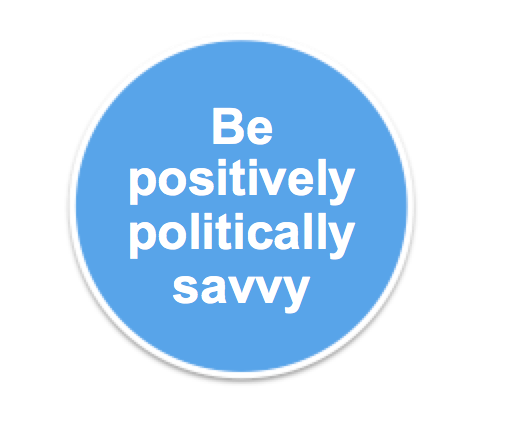This is the second part of my first post here about winning at the game of office politics by Jo Miller. So, let's talk about it.
This third option which Jo presented to win at the game of office politics, is to Become positively politically savvy!
This third option which Jo presented to win at the game of office politics, is to Become positively politically savvy!
 |
| Photo Credits: Winning at the Game of Office Politics @ GHC14 By Jo Miller |
Jo asked all the participants to think about someone they know at work, and liked the way they played office politics. She asked the participants to list down their qualities and characteristics which made them likeable. At the end of the exercise, participants shared that the people they like the most at work are those:
- who are knowledgeable
- who are helpful to other colleagues
- who are convincing during an argument
- who are technical savvy
- who get things done
- who are visible through their team contributions
- who have built credibility among their peers
Jo then introduced a tool to be better at dealing with the office politics. It is called building organizational awareness, by keenly observing the communication and relationships that surround us in our organizations. At GHC, we learnt a new term!
Now let's talk about how to make this organizational awareness work. In order to build the organization awareness, we need to say goodbye to an official organizational chart and build a shadow organizational map instead.
A shadow organizational map is build by identifying the people we consider as problem solvers. First, we need to draw a new organizational chart by putting these problem solvers at multiple levels, based on their influence and control over others and not the official title they posses. Second, we need to draw a solid line between people who enjoy good relationships with each other and a dotted line for the people with broken relationships with rest of the team. Third, we need to build arrows to represent flow of influence in each one of these relationships. Fourth, we need to put a circle around coalitions and also identity people who are either pushed aside or chose to stay aside on their isolated islands. Fifth, we need to list the factors which glu these people together. It could be going to the same school, previously working on a project together, similar interests or other common activities. It is not always a boy's club as we mostly think it to be, sometimes it is just more than that. Multiple things can bind people together and we need to identify them. Sixth, we need to identify key influencers, who act as sponsors or mentors for others with whom they enjoy really good relationships.
Seventh, we need to add verticals to the shadow organizational maps to understand how its hierarchy works, based on relationships, influences and coalitions. Once, we know how a shadow organizational map is built and works in our teams, we can make them work for us. There are two ways this information can be gathered to map our shadow organizations. First is through face-to-face interactions, second is through virtual interactions.
Every organization has some unwritten, unspoken "rules of the game". In order to be successful, we need to identify some rules of the game in our organizations, so that we can ethically and effectively navigate through those.
Finally, Jo talked about the the three ways to generate quick wins at work. Those will be discussed in the next post. Till then, start building the shadow organizational maps to make yourself organizationally aware of your surroundings. Happy Reading!
Note: Contents of this post are derived from Jo Miller's presentation at GHC and owned by her. Please do not copy them.
 |
| Photo Credits: Winning at the Game of Office Politics @ GHC14 By Jo Miller |
 |
| Photo Credits: Winning at the Game of Office Politics @ GHC14 By Jo Miller |
Seventh, we need to add verticals to the shadow organizational maps to understand how its hierarchy works, based on relationships, influences and coalitions. Once, we know how a shadow organizational map is built and works in our teams, we can make them work for us. There are two ways this information can be gathered to map our shadow organizations. First is through face-to-face interactions, second is through virtual interactions.
 |
| Photo Credits: Winning at the Game of Office Politics @ GHC14 By Jo Miller |
Finally, Jo talked about the the three ways to generate quick wins at work. Those will be discussed in the next post. Till then, start building the shadow organizational maps to make yourself organizationally aware of your surroundings. Happy Reading!
Note: Contents of this post are derived from Jo Miller's presentation at GHC and owned by her. Please do not copy them.



















